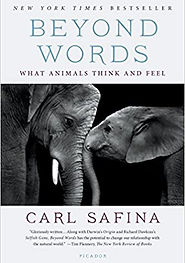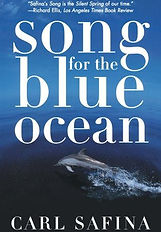S2E3: Animal Culture with Carl Safina
Claudia talks to well-known author Carl Safina about ‘animal culture’ and how culture is a crucial part of how some animals come to understand and experience the world. They chat about the incredible ways culture manifests in animals’ experiences and touch on what a serious consideration of animal culture could mean for conservation efforts.
About Carl Safina
Carl Safina grew up raising pigeons, training hawks and owls, and spending as many days and nights in the woods and on the water as he could. He is known for hislyrical non-fiction writing which fuses scientific understanding, emotional connection, and a moral call to action noting how humans are changing the living world, and what the changes mean for non-human beings and for us all.
Safina is the author of ten books including his classic Song for the Blue Ocean, the New York Times Bestseller Beyond Words; What Animals Think and Feel and his most recent title, Becoming Wild; How Animal Cultures Raise Families, Create Beauty, and Achieve Peace. His work has also appeared in The New York Times, TIME, The Guardian, and the National Geographic, amongst others. He has won numerous literary prizes including the MacArthur “genius” prize and the John Burroughs, James Beard, and George Rabb medals. In addition to his writing Safina was the host of the PBS series Saving the Ocean, he is the first Endowed Professor for Nature and Humanity at Stony Brook University, and he is the founding president of the not-for-profit Safina Center.
Connect with Carl Safina on his website (www.carlsafina.org), through his non-for-profit (www.safinacenter.org) or on Twitter (@Carl Safina).

Listen Here...
Recorded 25 August 2020

Chimp Vs Human: Memory Test by the BBC; Crowboarding: Russian roof-surfin' bird caught on tape by Aleksey Vnukov; Black Swans Surfing at the Gold Coast, Australia; S4:E19 – Carl Safina Becoming Wild by Species Unite; The Social Contractby Jean-Jacques Rousseau, The Malay Archipelago by Alfred Russel Wallace; The Outermost House: A Year of Life on the Great Beach of Cape Cod by Henry Beston.
Featured:
Giraffes are the tallest mammals on Earth. It used to believe that there was only one species of giraffes, but now scientists suspect that there are as many as 4 different species...






